The Ethereum network’s switch to Proof of Stake reduced its resource requirements by 99%, while the rise of a robust layer-2 ecosystem operating over it improved its scalability and accessibility extensively. Ethereum alternatives are no slouch. The Solana and the Cosmos ecosystem are gigantic networks with billions in TVL and millions of active users.
Web3 has gone from practical non-existence to harboring trillions in value in less than a decade and is still going strong. The trailblazing success of new networks like Sui only exemplifies this narrative.
Sui is a smart contract-capable network with a lot of fresh ideas. Built on a new programming language dubbed Move, it can process transactions in parallel and promptly achieve consensus, leading to fast transaction settlements. The Sui network has grown into a vast ecosystem with legs in DeFi, NFTs, Gaming, and anything else you might fancy.
If this is your first time hearing about Sui, this guide is meant to help you navigate its expansive landscape efficaciously. Starting with the basis of Sui, we will explore its most notable features, followed by a little taste of the Sui ecosystem experience, including wallets, Dapps, staking, and much more.
For some additional resources on Sui, we also have:
Let’s start with the Sui guide.
Introduction to the Sui network
The Sui network was born from years of research under Meta’s Diem stablecoin project. Key members of Diem, such as Evan Cheng, Sam Blackshear, Adeniyi Abiodun, and George Danezis left Diem after its failure and found Mysten Labs to work on the Sui blockchain.

Sui is a smart contracts blockchain network written in the Move language. It is known for its high throughput and low and consistent gas fees. The Sui mainnet went live in May 2023 and performed exceptionally in the first year of operations. The network had registered one million active users within two months of its launch and had bridged $100 million USDC by December 2023. Here’s a quick rundown of the tech behind Sui:
- Delegated Proof of Stake Consensus: It deploys a DPoS consensus mechanism that allows SUI token holders to either directly participate in consensus by operating a full node or delegating their tokens to another validator who participates on their behalf. DPoS on Sui offers several benefits:
- Increased Scalability
- Higher participation
- Reduced token liquidity
- Faster consensus
- Move Programming Language: It is a resource-oriented language offering a robust framework for representing digital assets. The language emphasizes safety and resource integrity, tailoring it for financial applications. Move represents a starkly different programming environment than Solidity by defining new storage and object definition rules. These rules make it exceptional for transaction parallel processing.
There are a lot of interesting details about Sui beyond the scope of this piece. We have a dedicated Sui Network Review that delves into the finer details.
Sui Foundation
The Sui Foundation plays a pivotal role in developing and maintaining the Sui blockchain by marshalling financial and personnel resources to support its mission. It focuses on educating, activating, funding, and promoting builders and creators working on Sui-based projects.
It administers several key programs, including the Developer Grant Program, the Delegation Program, and the Ambassador Program. Through these initiatives, the Sui Foundation aims to foster innovation and growth within the Sui ecosystem, ensuring that developers have the support and resources they need to build transformative products and applications on the Sui platform.

Key Features
The Sui network, developed by Mysten Labs, introduces innovative features and functionalities in the blockchain space. Here's a summary of its key features:
- zkLogin: It utilizes zero-knowledge proofs to enhance privacy and security during user authentication. This mechanism allows users to verify their identity without revealing sensitive information, ensuring a secure and private login process. It's a step towards more privacy-centric applications within the blockchain ecosystem.
- Parallel Processing: Sui introduces parallel processing capabilities, enabling the network to handle numerous transactions simultaneously. This approach differs significantly from traditional blockchains that process transactions sequentially, often leading to bottlenecks. Parallel processing enhances the network's efficiency and scalability, making Sui an ideal platform for high-performance applications.
- High Throughput: Leveraging its unique consensus mechanism and architecture, Sui achieves high throughput and can process thousands of transactions per second (TPS). This is crucial for supporting large-scale and demanding applications, such as gaming, decentralized finance (DeFi), and social networks, providing a seamless user experience without compromising on speed or reliability.
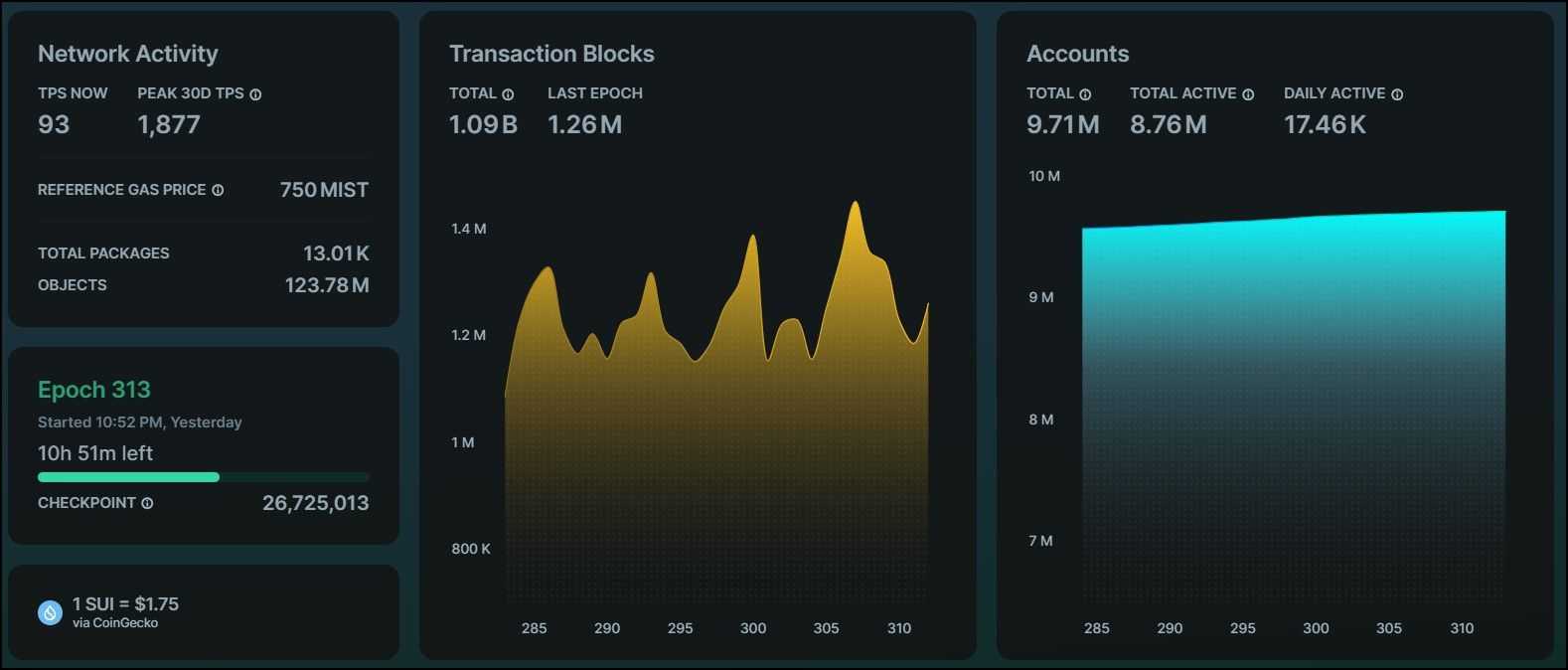
- SUI Token
- Utility: The SUI token serves multiple purposes within the Sui ecosystem. It is used for staking, enabling token holders to participate in the network's security and consensus mechanisms. Additionally, SUI tokens are used to pay for transaction fees (gas), ensuring the execution of smart contracts and transactions. The token also plays a role in governance, allowing holders to vote on proposals and decisions affecting the future direction of the network. Token holders also have the right to participate in protocol governance.
- Supply, Distribution, and Vesting: Details on the SUI token's supply, distribution, and vesting schedules are designed to ensure long-term sustainability and equitable distribution among participants. These include allocations for the development team, community incentives, and strategic partners, with vesting periods to align stakeholders' interests with the network's growth and success.
- Sui Wormhole Bridge: The Sui bridging represents a critical infrastructure piece for interoperability, allowing for the seamless transfer of assets between Sui and other blockchains. This bridge facilitates cross-chain interactions, expanding the utility and accessibility of the Sui ecosystem. Users can move tokens and data across different blockchain platforms without compromising security or efficiency, enabling a more interconnected and versatile Web3 environment. Access the Portal Bridge to bridge tokens to and from Sui.
In summary, the Sui network's unique features, such as zkLogin, parallel processing, high throughput, the multifaceted utility of the SUI token, and the Sui Wormhole bridge, position it as a cutting-edge platform in the blockchain sector. These features aim to address some of the most significant challenges in blockchain technology, including scalability, interoperability, and privacy, making Sui a promising candidate for powering the next generation of decentralized applications.
Sui Wallets
Now that you’re equipped with the basics of the Sui network, creating a wallet compatible with the Sui network is the first step towards interacting with the ecosystem. Since Sui runs on a separate virtual machine from EVM, your Ethereum addresses are no good here.
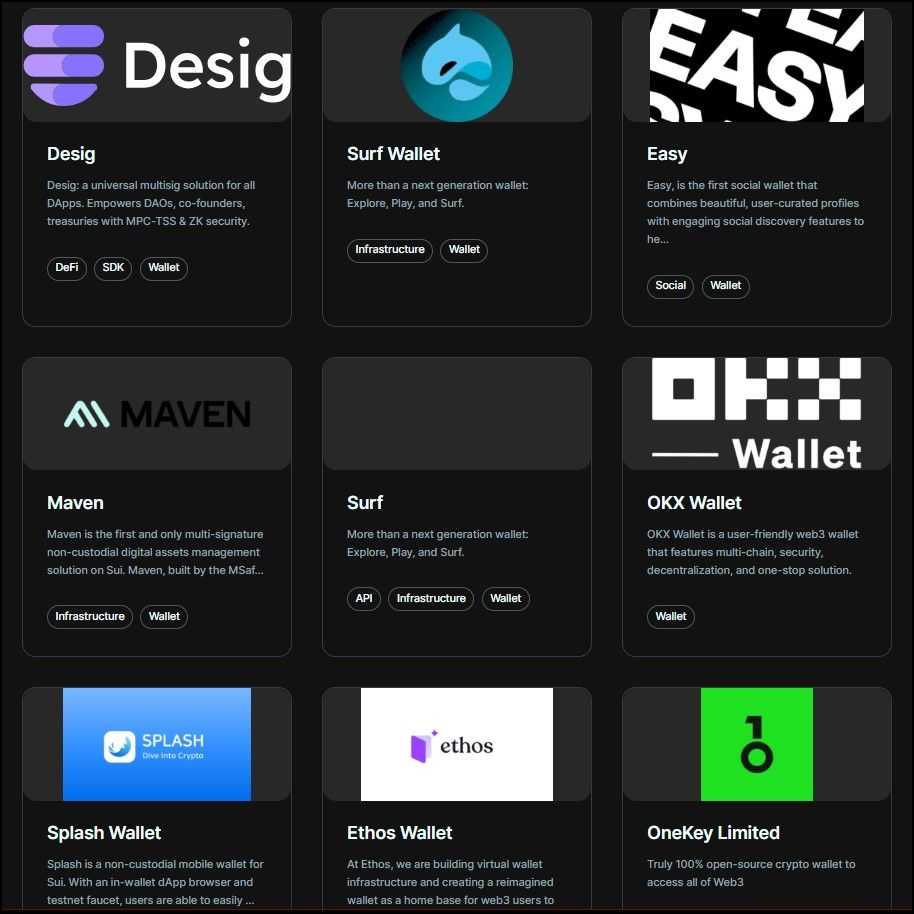
There are fifteen wallet providers to choose from, and I guess more options may be available with time. The Sui Wallet is the standard wallet for the network and one that we recommend. Here's how you can install it:
- Visit the Sui Wallet in the Chrome Webstore to download and install the wallet extension.
- Open the extension and click Get Started.
- Next, you have the option to create a new wallet or import an existing one. Click on Create new wallet if you don’t have an existing Sui address.
- Accept the terms of service after reading it thoroughly. Then, click Create.
- Save the distinct alphanumeric key in a secure location.
- Click Done.
- You have a Sui wallet to access the ecosystem.
Staking via Sui Wallet
You can conveniently participate in Sui’s Delegated Proof of Stake via the Sui Wallet. Once registered and acquired some SUI tokens to stake, open the wallet and find the ‘Stake and Earn SUI’ option.
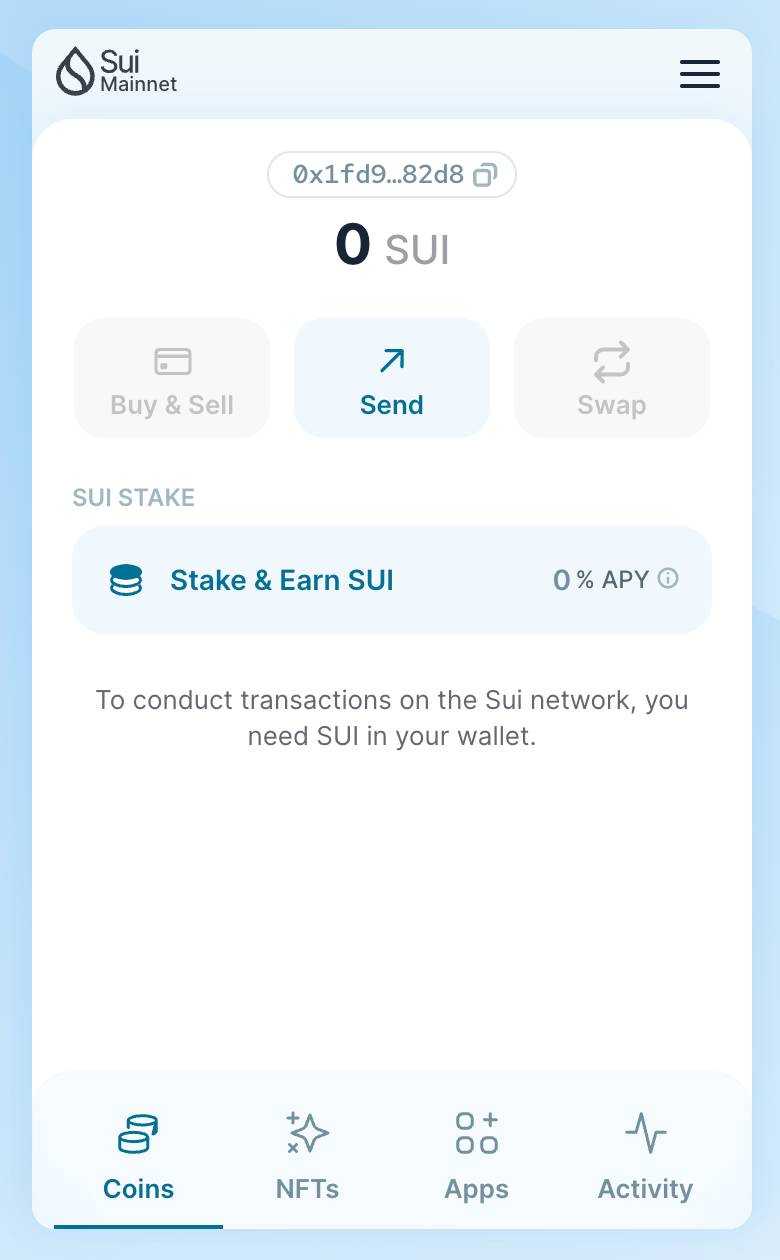
Next, as a SUI delegator, you need to find a delegate who will participate in the Sui consensus on your behalf. You can do that from the wallet itself. You can withdraw your stake at any time and reap the rewards.
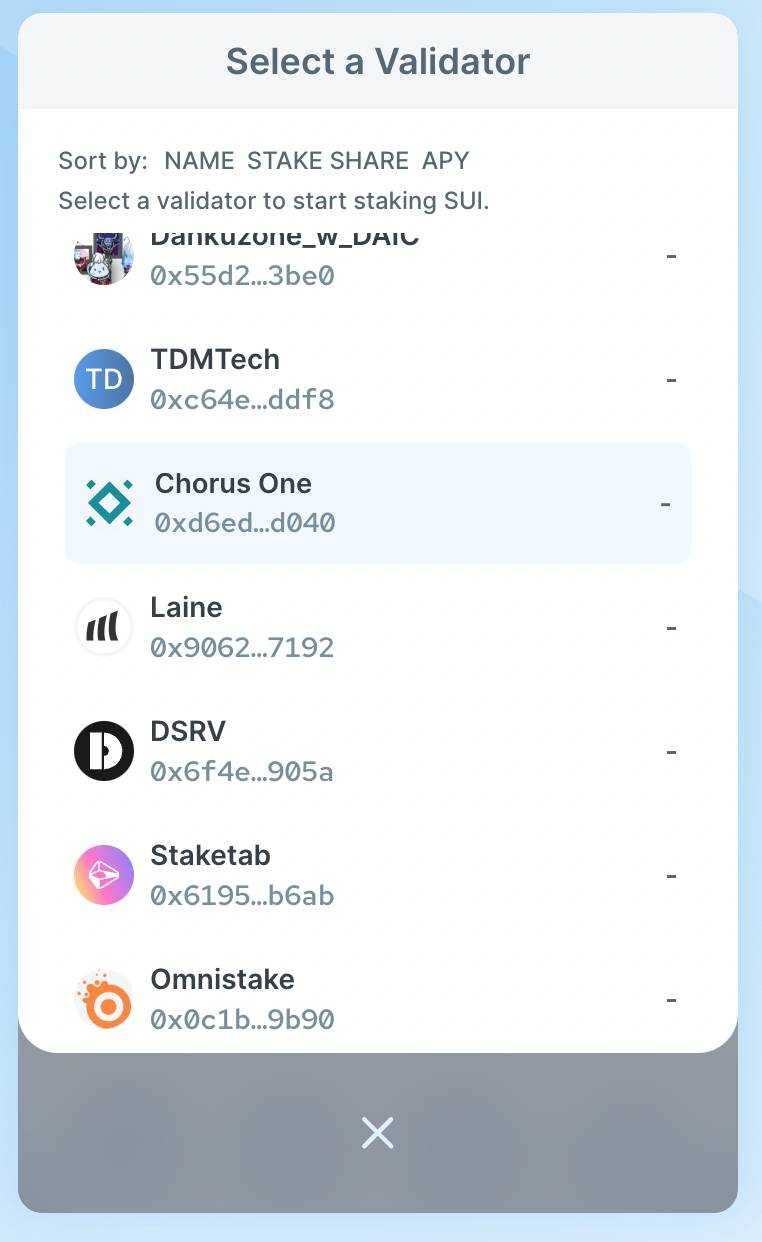
Interacting with Sui
With your Sui wallet set up, you will need SUI tokens to pay for network fees while interacting with Dapps and sending transactions in the Sui ecosystem. Using supported bridges, like the Wormhole bridge, to onboard funds from chains you already own cryptocurrencies in is the easiest and most blockchain-native way of getting your hands on the Sui token.
The Wormhole Portal Bridge supports several crypto assets across 22 blockchains, including Sui. You can use this bridge to transfer stablecoins from networks like Ethereum to your Sui address and start interacting with the Sui ecosystem quickly.
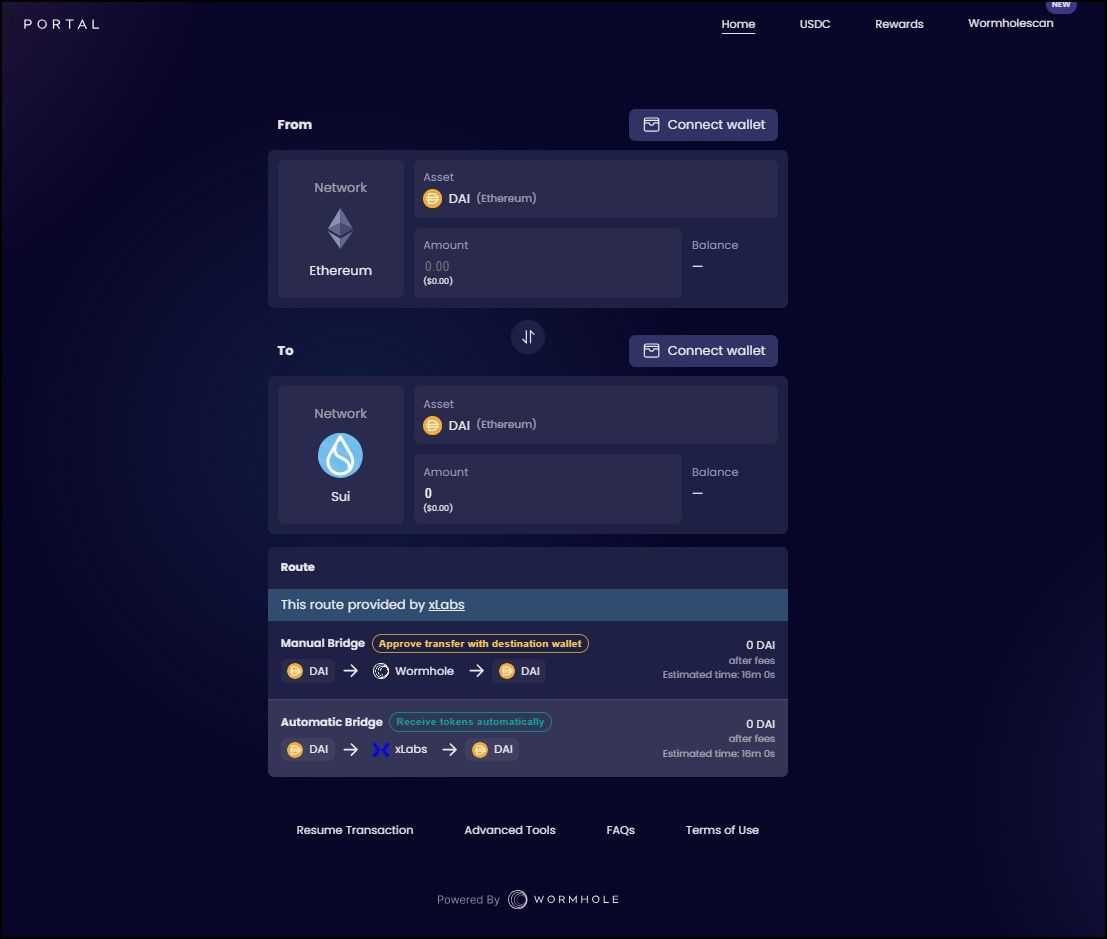
Alternatively, you can simply purchase some Sui from an exchange like Binance, OKX, or Coinbase and send it to your Sui wallet to get started with the Sui ecosystem.
The Sui Ecosystem
With your wallet ready to send some transactions, you are ready to explore the Sui ecosystem, which is packed with a plethora of Dapps spanning finance, NFTs, gaming, entertainment, social, and much more. Coin Bureau has a dedicated article on the Dapp landscape of the Sui Network if you find options overwhelming or unsure where to start. Regardless, here are a few recommendations:
Scallop
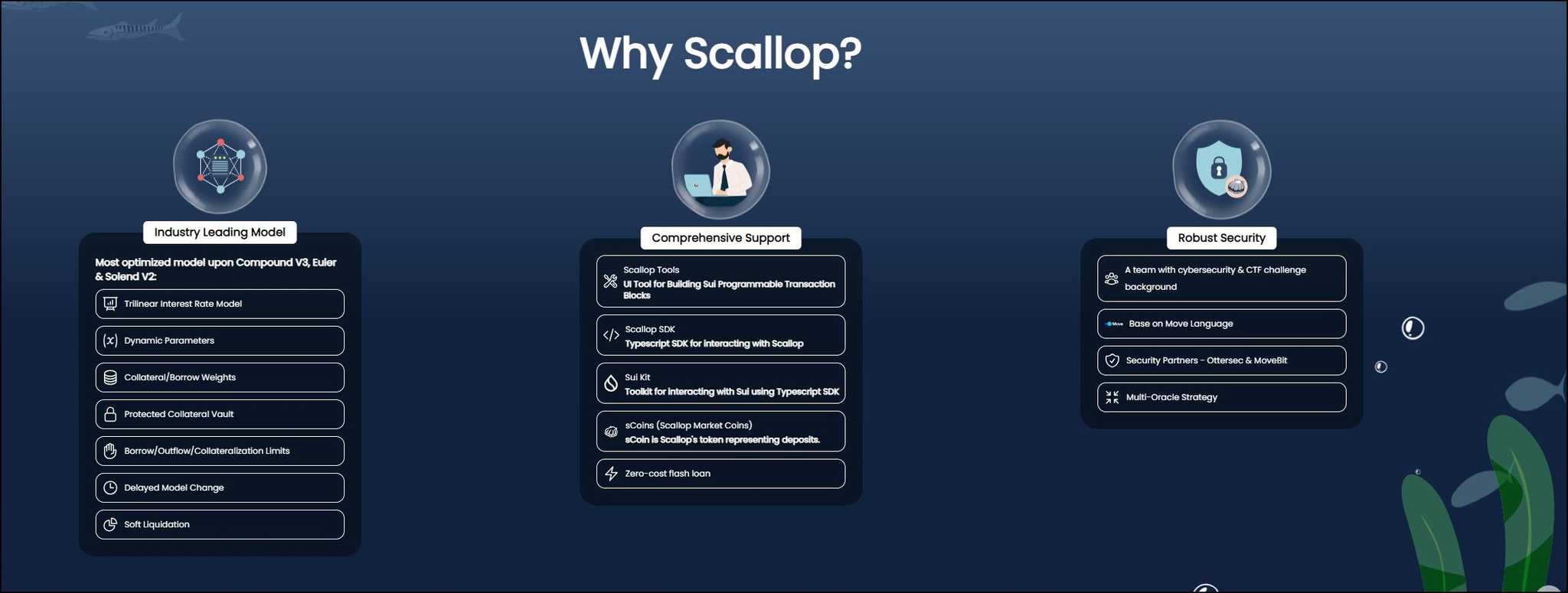
Scallop is a DeFi lending protocol that optimizes the Compound V3 model to minimize risks in volatile markets. It provides comprehensive institutional-grade features, including a Scallop SDK for interaction and sCoins for zero-cost flash loans.
Scallop experienced significant growth, with a TVL reaching $64M in January 2024, making it the leading DeFi protocol on Sui. It offers several asset management tools on a unified platform with a user-friendly interface.
KriyaDEX
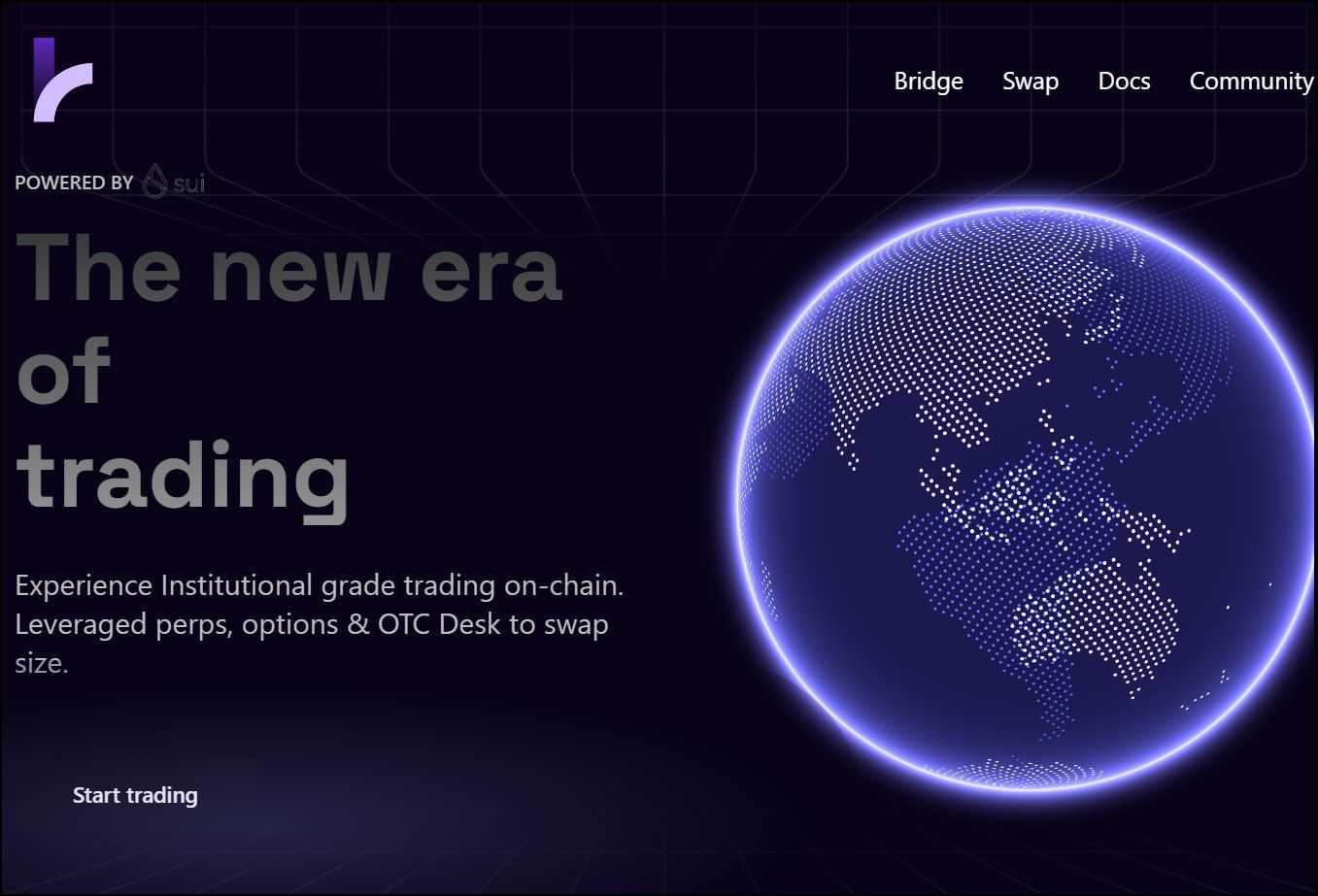
KriyaDEX is a perpetuals trading platform on Sui. It aims to solve issues like capital inefficiency, inaccurate price discovery, fragmented liquidity, and disproportionate custodian risk. It has launched two products so far:
- KriyaDEX: An order book-based DEX for trading perpetuals with 20x leverage and minimal latency.
- KriyaSwap: An AMM for spot trading used by 10k wallets on devnet.
Their mission is to match or exceed the user experience of centralized by improving UX and integrating with perp aggregators to bring cross-chain liquidity. They are planning to release an options DEX. KriyaDEX emphasizes a user-friendly experience with multiple order types and product types, aiming to become a leading platform for on-chain derivative trading.
Sudo Finance

Sudo Finance offers a platform for trading real-world assets (RWAs). As a decentralized synthetic asset trading platform, Sudo's mission is to democratize access to stock equivalent synthetic financial products for users worldwide, regardless of their economic status. Key features include token swapping and high-leverage trading.
The Dapp landscape on Sui expands vast, encompassing thousands of users and millions in value. The Dapps presented here barely scratch the surface; I recommend checking out our dedicated piece on the Sui Ecosystem for more details.
Sui Vision Blockchain Explorer
A blockchain explorer is an online tool to view all transactions that have taken place on the blockchain, including the information on blocks, addresses, and transactions themselves. The Sui Vision explorer presents an intuitive summary of all the activity on the Sui mainnet and testnets.
As soon as you open the Explorer, you are greeted with a snapshot of the Sui mainnet, where you can find information on Sui accounts, transaction blocks, network activity, and the prevailing gas prices.

The Sui Vision explorer stands out by displaying the validators who secure the network and their stakes, a testament to the network’s openness and transparency.
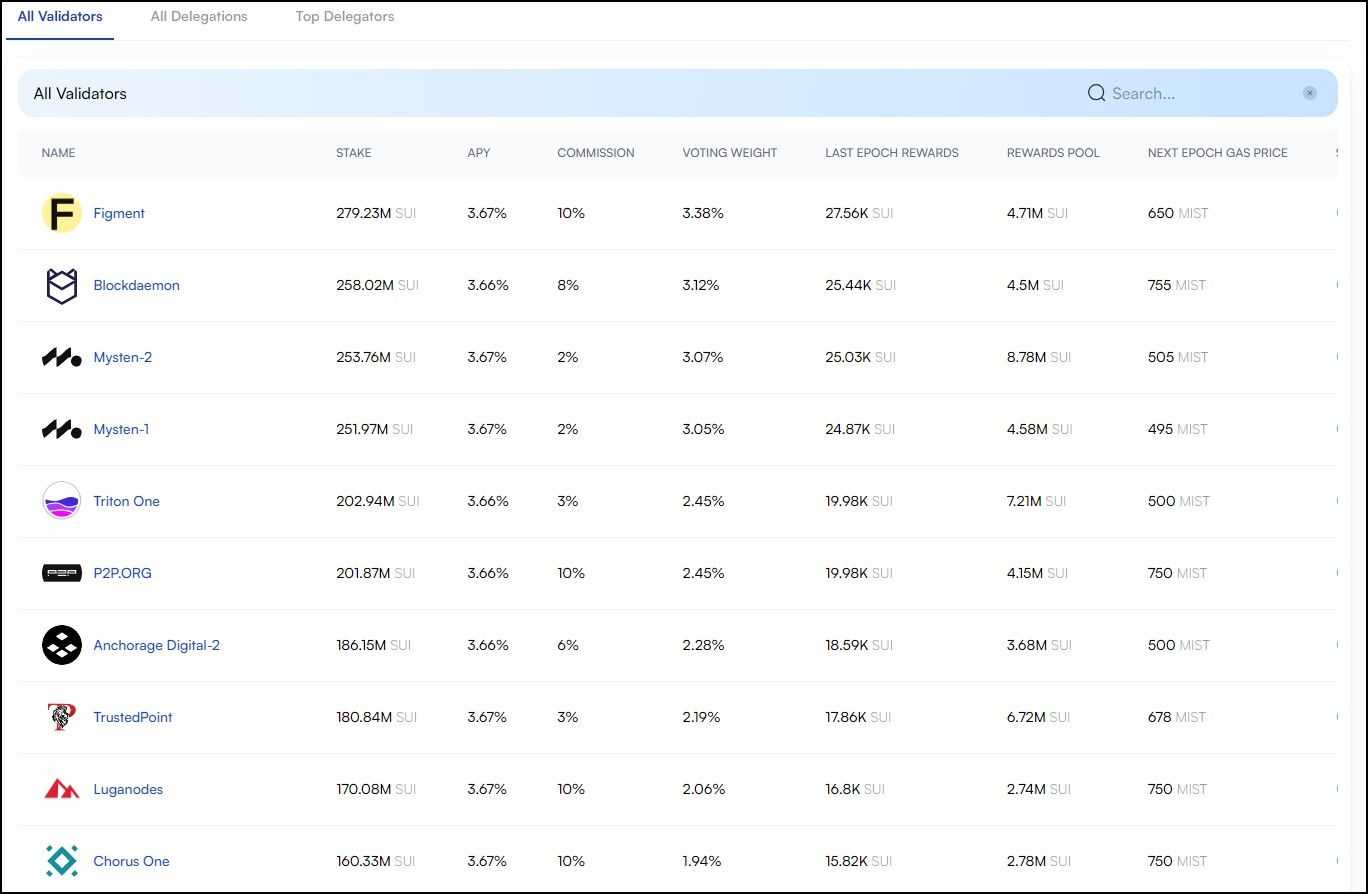
Blockchain explorers are useful tools for users to be able to verify addresses, check transaction statuses, find wallet holdings and more. We go into more detail on blockchain explorers in our Etherscan Guide.
Sui Community
The Sui community is vibrant and active across various platforms, including X and Discord, where members connect, network and share ideas. Here are some ways you can participate in the Sui community:
- Follow their X account to get live ecosystem updates.
- For those looking to dive deeper into Sui's developments or join the conversation, the Discord channel is a great place to start.
- Sui hosts regular events, meetups, and conferences across the globe. The schedule for these events is available on their website.
- As a Sui Ambassador, you can educate people about the network and grow the community.
Closing Thoughts
Exploring the Sui network unveils a realm where scalability, efficiency, and innovation converge, marking a significant milestone in the blockchain domain. As we've navigated through its intricacies, from its pioneering technology to its vibrant ecosystem, it's evident that Sui is not just another blockchain. It's a testament to the relentless pursuit of advancement in Web3, empowering developers and users alike with unparalleled capabilities. Whether you're a seasoned developer or a curious newcomer, Sui offers a gateway to explore, build, and contribute to the future of decentralized applications. As the ecosystem continues to evolve, the potential for groundbreaking projects on Sui is boundless, promising an exciting journey ahead for all involved.
Disclaimer: This is paid content, yet the opinions and viewpoints expressed by the writer are their own and were not influenced by the project team. The inclusion of this content on the Coin Bureau platform should not be interpreted as an endorsement or recommendation of the projects or products being discussed. This article is for entertainment and informational purposes only and the Coin Bureau assumes no responsibility for any actions taken by readers based on the information provided within this article.
Frequently Asked Questions
Sui is a decentralized blockchain network built on the Move programming language known for its high throughput and low gas fees. It utilizes parallel processing for efficient transaction execution and consensus, making it stand out for applications requiring fast settlements. Sui's ecosystem supports a wide range of applications, from DeFi to NFTs, powered by its unique technological foundations, including zkLogin for enhanced privacy and a delegated proof-of-stake consensus mechanism for improved scalability and user participation.
The Sui Foundation supports the Sui blockchain's growth by marshaling resources for education and funding and promoting Sui-based projects. It administers key programs like the Developer Grant Program, Delegation Program, and Ambassador Program to foster innovation within the Sui ecosystem. By ensuring developers have the necessary support and resources, the Foundation aims to build a vibrant community around Sui, enabling the creation of transformative products and applications on its platform.
Sui offers high performance, scalability, and security, making it appealing for developers and users. Its Move programming language ensures safe and efficient smart contract deployment, while features like parallel processing and high throughput facilitate rapid transaction settlements. The Sui ecosystem is rich with opportunities in various sectors like gaming, finance, and digital collectibles, supported by a robust community and the Sui Foundation's initiatives to promote development and innovation on the network.
Disclaimer: These are the writer’s opinions and should not be considered investment advice. Readers should do their own research.


